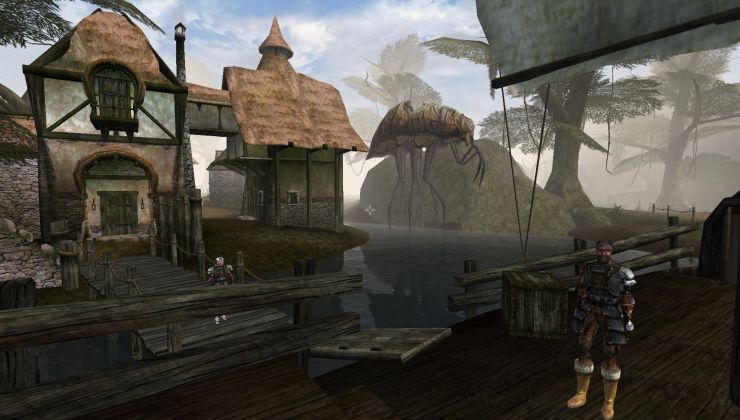Another month and another Steam Hardware Survey, despite what some out there are saying, there is no cause for alarm.
Here's the latest statistics from Valve (from here):
- Windows: 98.33% +0.29%
- Mac: 1.35% -0.21%
- Linux: 0.27% -0.05%
While I've seen people disappointed with the numbers, it really can't be helped right now. To be clear, this in no way means there's suddenly less Linux gamers than a few months ago, not at all. Steam itself is growing rapidly in markets where Linux isn't currently popular. One market growing, doesn't mean another is shrinking if you're adding more to the total. Not only that, but it's being fuelled a lot by PLAYERUNKNOWN'S BATTLEGROUNDS which is not on Linux or Mac. Mac is actually seeing the biggest losses over the past few months due to this.
Steam is practically exploding with "Simplified Chinese" now taking the biggest share of users at 64.35% (+8.23%) on Windows. On Linux, Simplified Chinese only has a share of 0.63%, so you can easily link up what's happening.
Once the bubble has burst over the mass hype around PUBG, I fully expect the numbers to move back towards what they were before. It will happen too, all bubbles eventually burst, it will probably happen again in future and in reality nothing has actually changed.
When speaking to game developers, they often show sales from Linux games being around the 1% mark and higher. Most recently, in part 5 of my article series of talking to developers about sales of their Linux games, we were seeing numbers well above what Valve have been showing recently. I've spoken to another few developers over the last few weeks, while trying to arrange part 6 in the series and I can already tell you that Linux gaming is not in a sudden decline in terms of sales numbers.
64.35% of all steam users are Chinese speaking. English is only 17.02% that is an interesting statistic in of itself. with Chinese at a growth of 8.23% and english at a decline of -4.25%. with the increase of windows 7 almost in the same proportions and the drop of windows 10 similar to english speakers. if you make a game on steam it should have Chinese translations be designed for dx11 as a prereq if you want the largest market. interesting times indeed...
Well, that in itself should be good for developers adopting Vulkan... and knock-on is better WINE gaming for Linux users, and easier Linux Ports.
Just my opinion, no offense.
With support built into major engines I don't think we are in a decline anytime soon.Today it's cheaper to deliver a game to Linux, but not charge-free.
In any case I think judging by how many pages GOL has already , I think we have enough games for a lifetime at least :)
Porting has issues with graphics drivers (they are not completely broken, but have a numerous arthifacts), audiosubsystem (hello Pulse/Alsa), testing (on bunch of distros, x86 and 64 platforms), building and so on.
And now the question is:
1) Would I make more money if I deliver more content (or content of better quality) in my game
or
2) Would I make more money if I deliver my game to whose, who cannot afford to buy even OS?
If previously there are was about 1-1.5% and Valve stands behind, but now percentage drops in few times and Valve playing themselves with VR (which are more niche than Linux gaming itself), I doubt it.
To be quite honest, I don't see the point of rehashing this article every month just to reiterate that the numbers don't mean jack and that the Chinese are taking over Steam. Might as well not talk about the surveys at all if they're meaningless and we're meant to disregard them.Probably we should tell Chinese about advantages of Linux (i.e. Linux gaming)?
Just my opinion, no offense.
They have Kylin (which are official Canonical Ubuntu derivative for Chinese) and they still use pirated Windows after all.
With support built into major engines I don't think we are in a decline anytime soon.Today it's cheaper to deliver a game to Linux, but not charge-free.
In any case I think judging by how many pages GOL has already , I think we have enough games for a lifetime at least :)
Porting has issues with graphics drivers (they are not completely broken, but have a numerous arthifacts), audiosubsystem (hello Pulse/Alsa), testing (on bunch of distros, x86 and 64 platforms), building and so on.
And now the question is:
1) Would I make more money if I deliver more content (or content of better quality) in my game
or
2) Would I make more money if I deliver my game to whose, who cannot afford to buy even OS?
If previously there are was about 1-1.5% and Valve stands behind, but now percentage drops in few times and Valve playing themselves with VR (which are more niche than Linux gaming itself), I doubt it.
Nobody says it's "free" , just that support is being integrated into major engines.
It still takes work , sure, but the option is now there.
I honestly doubt anyone thinks we cannot "afford" the OS. We are buying the games and asking for the privilege to buy them after all.
And yes if they do look at the percentage alone they may omit Linux as a platform but at the same time a simple google search will produce the article Liam posted from PC gamer that shows the percentages aren't that significant and there are still enough users that might buy the end product.
Also a spike in Windows users may relate to a trend for one game in particular(i.e PUBG) and that benefits only the devs of that game.
Also a spike in Windows users may relate to a trend for one game in particular(i.e PUBG) and that benefits only the devs of that game.
That benefit all windows devs, because all those people who came for PUBG can buy another game or two, or maybe 10 who knows.
hardly any Linux users are getting access to the survey.
Yeah, grand scale conspiracy as usual.
Last edited by Boogiepop_Phantom on 3 Dec 2017 at 11:30 am UTC
Hands up anyone who has had the survey recently, anyone?Yep, yesterday (second time this year)
Another possible way to make 0% Valve share from Linux sales, so devs could offer some bonuses for those users, who buy and run games in Linux to stimulate them.
Devs could not make a sale for one platform, but they can offer DLCs, start bundles, some nice wallpapers, emoji or whatsever they could offer.
Last edited by Areso on 3 Dec 2017 at 2:20 pm UTC
Hands up anyone who has had the survey recently, anyone?Yep, yesterday (second time this year)
Me too, two days ago. (on Linux, heh)
Last edited by g000h on 3 Dec 2017 at 2:21 pm UTC
Another possible way to make 0% Valve share from Linux sales, so devs could offer some bonuses for those users, who buy and run games in Linux to stimulate them.It's a nice idea in theory but it's very hard to come up with something of that nature that wouldn't make users of other platforms feel being treated unfairly neither come off as cheap.
Devs could not make a sale for one platform, but they can offer DLCs, start bundles, some nice wallpapers, emoji or whatsever they could offer.
But I guess some purely cosmetic items that look really nice among a bunch of non-exclusive items could do the trick. In fact the more I think about it the more it seems like a good idea if done right.
Last edited by qptain Nemo on 3 Dec 2017 at 2:47 pm UTC
Also a spike in Windows users may relate to a trend for one game in particular(i.e PUBG) and that benefits only the devs of that game.That benefit all windows devs, because all those people who came for PUBG can buy another game or two, or maybe 10 who knows.
Not my original point.
My point was the increase in Windows users was specifically for one game : PUBG
Whether said users remain on steam or make any more purchases is unknown at this time.
Last edited by razing32 on 3 Dec 2017 at 5:58 pm UTC
Hands up anyone who has had the survey recently, anyone?Yep, yesterday (second time this year)
I don't think I ever have under Linux
Sorry, but I don't see the point always mentioning that the absolute number of Linux Steam users "still" grows. It sounds like saying "It's not that bad".I'll be honest, really struggled with replying to this. How can you not think that's important? It's extremely important to know when dealing with percentages if the overall number you're dealing with is bigger and where that change has come from. It would be a completely different story if the Linux percentage dropped as much as it has, without seeing the trends behind the percentages. That's the entire point of the article, to attempt to explain how it's not actually as bad as some people keep saying it is.
Again, see my other reply with PC World as the example of why such things are important to be clear about.
Even if some dev plans on absolute numbers, it wouldn't be clever from an economical point.As I said in the article "nothing has actually changed". This has always been the case and even if we went up to 2%, it would still be the case.
as every man hour spent to improve experience for the potentially 100 times larger user base is most likely far better spent.
I get this is a hot topic for some people, but it is important to highlight and look into the actual reasons behind change and understand them.
Yes, this is all true, and any developer that can produce a Linux or Mac OS game with minimal cost ( perhaps because they already use a x-platform games engine ) will probably do so almost regardless of user base gyrations.
But games companies are still businesses, and many will still follow the money. That is why we have seen much free-to-play, fragmented DLC rather than coherent expansions, on-line competitive multi-player, pay-to-win, random ( often bad ) content purchasable loot crates, and so on.
These changes directly improve revenue, so they make their way into games, even though most players dislike at least some of them ( most of them in my case ). My main concern with these stats ( as per your analysis ) would be how a massive additional player base from China would skew the games marketplace? I'm certain that likes/dislikes and accepted behaviour will be different, and suspect that will affect future decisions in the industry.
Yeah, grand scale conspiracy as usual.No conspiracy involved, I'm just saying that I've had the survey more times in Windows in the last year than I have in the entire time that steam has been available on Linux.
Yeah, grand scale conspiracy as usual.No conspiracy involved, I'm just saying that I've had the survey more times in Windows in the last year than I have in the entire time that steam has been available on Linux.
For a while that was my experience too; then it flipped to more often on Linux.
It is still fairly rare for me to get the survey at all, primarily, I think, because I suspend my PC most of the time when I am not using it, so Steam is rarely restarted. About the only obvious part of the survey algorithm is that it only appears to trigger as part of the login/connect process. Without knowing the rest of the algorithm, it is difficult to judge if it is even-handed.
Beyond the even-handedness aspect, the other obvious potential difference is if Linux users, as a whole, are more likely to game in off-line mode, or act in some other way that bypasses the survey. Unfortunately, this is also an unknown.
Sorry, but I don't see the point always mentioning that the absolute number of Linux Steam users "still" grows. It sounds like saying "It's not that bad".Presumably what counts for developers is who buys games. So for instance, if there are patterns observable in different locales, like English speakers having more dough to buy games with or Chinese (simplified) users tending to be fanboys of a single game and not buy that much else, developers would be fools not to look past the raw numbers of individuals on Steam.
It is that bad - the fraction of Linux users is far below 1 %.
And THAT is ALL that counts to developers (unless they are Linux fans).
It's still not good. And I suspect that the Chinese will be among the last to start using Linux unless there's some kind of concerted government action to change things. So to some extent these percentages probably represent a new normal; when the Chinese influx stabilizes a bit we'll have the new floor from which to measure future growth (which will tend to be, for a while at least, happening in places other than China).









 How to install Hollow Knight: Silksong mods on Linux, SteamOS and Steam Deck
How to install Hollow Knight: Silksong mods on Linux, SteamOS and Steam Deck